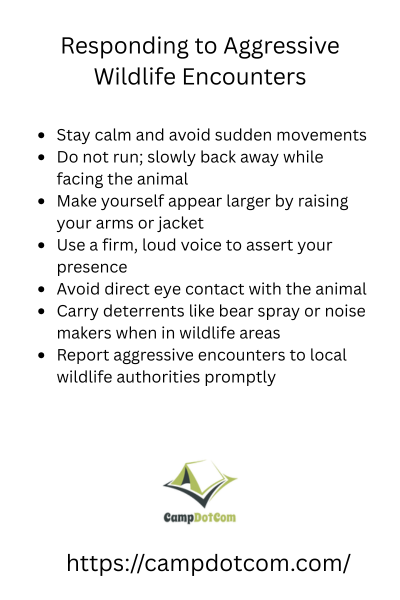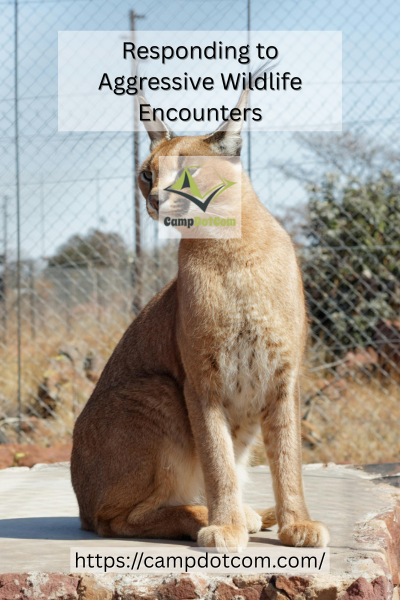Responding to aggressive wildlife encounters is not something most of us think about until we are suddenly face to face with a snorting wild boar or an overly curious bear. I can tell you from experience, I learned that lesson the hard way.
A few years ago, I was on a solo hike in the Rockies. Everything was going perfectly until I took a wrong turn, wandered onto a rarely used trail, and came across a black bear. I wish I could say I stayed calm, remembered everything I had seen on survival shows, and backed away slowly. But the truth is, I froze in place and managed to squeak out something like “nice bear?”
Thankfully, the bear just wandered off, but that moment taught me something I will never forget. You have to know how to respond before you find yourself right in the middle of the situation.
As an Amazon Associate, I earn from qualifying purchases. Some of the links in this article are affiliate links. This means that, at zero cost to you, I will earn an affiliate commission if you click through the link and finalize a purchase.
Read More About Responding to Aggressive Wildlife Encounters

Why Do Animals Get Aggressive?
Before we dive into responding to aggressive wildlife encounters, it’s good to understand why animals might act that way in the first place.
Most of the time, animals aren’t looking for a fight. They’re either:
– Protecting their young
– Defending their territory
– Startled or feel cornered
– Hungry (and possibly see you as a threat or competition)
So no, they’re not out to get you personally. But if you stumble into the wrong situation, things can escalate fast.
More Things to Know About Responding to Aggressive Wildlife Encounters

Trust Your Gut—But Also Know What to Do
When you are out in the wild and your heart suddenly leaps into your throat, instinct alone is not enough. You need a plan. Responding to aggressive wildlife encounters is not about being fearless, it is about being smart.
Here is what I have learned from both personal experience and plenty of research since my bear encounter.
If You Encounter a Bear…
Stay calm, and yes, I know that is easier said than done. Do not run because it can trigger a chase. Instead, speak in a calm voice and slowly back away. If the animal seems unsure about you, make yourself appear larger, but avoid sudden movements. Above all, never place yourself between a mother and her young.
If a Moose Charges…
Yup, moose. People don’t talk about them enough, but they can be way more aggressive than bears. I’ve had one huff at me in Alaska and I noped right out of there. If a moose charges, run. Seriously. Put a tree or rock between you and it. Moose aren’t predators—they just want you gone.
What About Snakes?
Now this is one area where staying still actually helps. If you’re too close to a rattlesnake and it starts rattling, freeze. Back away slowly, keeping your eyes on it. Most bites happen when people panic and step closer without realizing it.
Mountain Lions Are Stealthy—and Serious
This one can really scare people, and for good reason. If you see a mountain lion, never turn your back. Maintain eye contact, wave your arms, make noise, and make yourself look bigger. If it begins to approach, throw rocks or sticks, but do not run. Running can trigger its instinct to chase. This is the kind of situation where you focus entirely on survival.
Wild Boars? Oh Boy.
These animals can be unpredictable. If one charges, try to climb to a safe spot or put a barrier between yourself and the animal. They are fast, strong, and often move in groups. If you hear rustling and grunting in thick brush, back away immediately.
Prevention Is Always Better
Honestly, the best advice I can give about responding to aggressive wildlife encounters is to avoid them in the first place. Stay on marked trails, make noise as you hike, and avoid hiking alone in remote areas if you can help it.
I always carry bear spray now, even on shorter hikes. I used to think it was overkill—but once you’ve locked eyes with a curious predator, you realize it’s just being prepared.
Your Guide to Staying Calm and Safe Around Wild Animals
You do not need to be a wilderness expert or a seasoned survivalist to stay safe in the outdoors. You simply need to be aware, alert, and equipped with the right knowledge. Most animals prefer to avoid humans, but when those rare encounters happen, knowing how to respond to aggressive wildlife can make all the difference.
So get out there and enjoy nature, but do it wisely. The goal is always to return home with great stories, not scars.
And if you ever freeze and blurt out “nice bear?” like I once did, make sure you have a backup plan ready.
